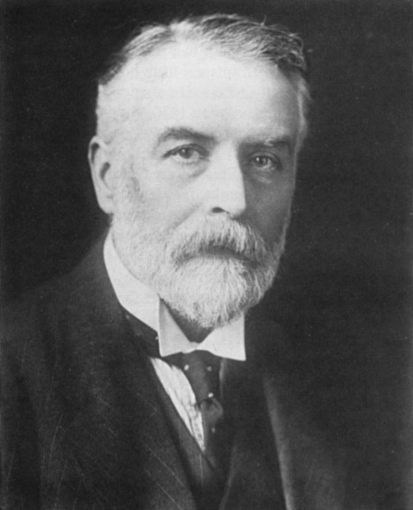<Back to Index>
- Zoologist George Albert Boulenger, 1858
- Novelist Miguel Ángel Asturias Rosales, 1899
- Admiral of the U.S. Navy Arleigh Albert "31-knot" Burke, 1901
PAGE SPONSOR

George Albert Boulenger (October 19, 1858 – November 23, 1937) was a Belgian - British zoologist who identified over 2000 new animal species, chiefly fish, reptiles and amphibians.
Boulenger was born in Brussels, Belgium, the only son of Gustave Boulenger, a Belgian public notary, and Juliette Piérart de Valenciennes. He graduated in 1876 from the Free University in Brussels with a degree in natural sciences and worked for a while at the Museum of Natural History of Brussels as an assistant naturalist studying amphibians, reptiles, and fishes. He also made frequent visits during this time to the Muséum National d'Histoire Naturelle in Paris and the British Museum in London.
In 1880, he was invited to work at the Natural History Museum, then a department of the British Museum, by Dr. Albert C.L.G. Günther and assigned to the task of cataloguing the amphibians in the collection. His position in the British Museum meant that he had to be a civil servant of the British Empire, and so became a naturalized British subject. In 1882 he became a first class assistant in the Department of Zoology and remained in that position until his retirement in 1920.
After his retirement from the British Museum, Boulenger studied roses and published 34 papers on botanical subjects and two volumes on the roses of Europe. He died in Saint Malo, France.
According to biographical accounts, he was incredibly methodical and had an amazing memory that enabled him to remember every specimen and scientific name he ever saw. He also had extraordinary powers of writing and seldom made a second draft of anything he wrote and his manuscripts showed but few corrections before going to the publisher.
Boulenger also played the violin, could speak French, German and English apart from reading Spanish, Italian and a bit of Russian. As a zoologist, he also had a working knowledge of both Greek and Latin.
By 1921, Boulenger had published 875 papers totaling more than 5,000 pages, as well as 19 monographs on fishes, amphibians, and reptiles. The list of his publications and its index of species covers 77 printed pages. He described 1,096 species of fish, 556 species of amphibians, and 872 species of reptiles. He was famous for his monographs on amphibians, lizards and other reptiles, and fishes for example his monographs on the fishes of Africa.
He
was a member of the American Society of Ichthyologists and
Herpetologists and was elected its first honorary member in 1935. In
1937, Belgium conferred him the Order of Léopold, the highest honor awarded to a civilian. In 1897 King Léopold II of Belgium started to recruit naturalists to help create the Congo museum. Boulenger was named chairman for this commission. His main discovery in 1921 was a strange fish from Congo. It was eyeless and lacked pigmentation.
He recognized it as new and unrelated to any extant epigean (eyed,
surface) species of Africa. He wrote a brief paper describing this new
species of cave fish, the first ever described from Africa. He called it Caecobarbus geertsi, from caeco = blind, barbus = barb, and geertsii, honoring a mysterious person, M. Geerts, who provided him with the
specimen. Today it is known as the Congo or African blind barb. This
was published in Nature.